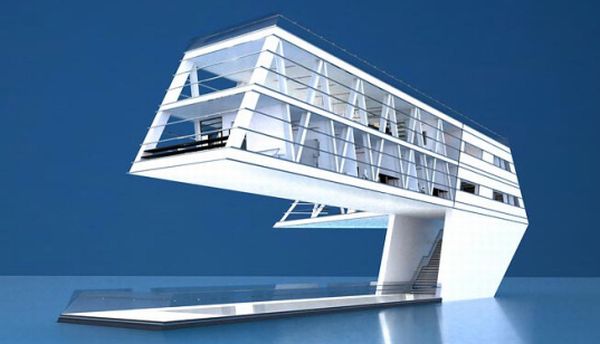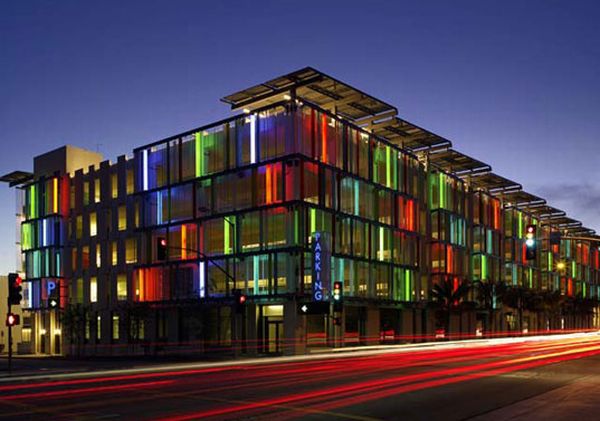
In the wake of rising population and reducing land available for housing, scientists and architects are looking for more options for housing people in the future, while not affecting the nature. Many ideas have come up and gone down, but some ideas have managed to leave an impression behind.
One such idea is the construction of floating houses. What makes this even more lucrative is the fact that about three-fourth of the planet is under water. So, by constructing these houses, one can actually utilize this vast portion of the planet, which has till now been left undisturbed. Moreover, with rising sea-levels, it is likely that many land-areas will be under water in the coming years. In such a case, these houses may prove to be the best alternative for humans to live in.
The concept
The concept of a floating house is not new. In fact, in many countries in Europe, timber, floating houses have been built over lakes, though these houses are smaller and demand more wood-supply which is impractical nowadays. A floating house should be well-balanced. In case of tides, these houses should rise and fall slowly as per the tide, without affecting the inhabitants. Moreover, these houses will be created keeping in mind their ecological aspects. For instance, none of these houses will affect the view and appearance of the lake or sea where they are constructed.
Trends
1. The last resort solar powered floating home
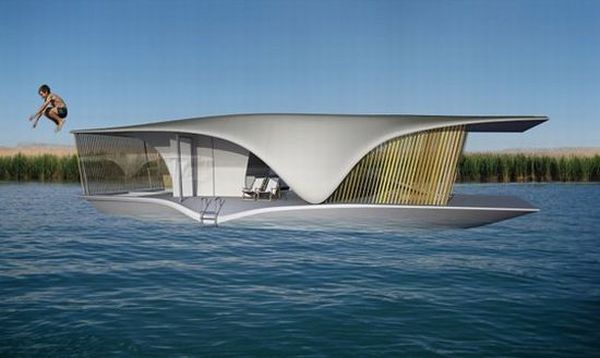
The award-winning “The Last Resort” by RAFAA Architecture and Design is a sleek floating architecture, powered by solar energy. The Last Resort is about 5 meters wide and 15 meters long. The structure goes up to two levels, which are distributed as follows: house-mechanism, involving the sleeping units and other mechanical equipment required to propel the home on the waves on the lower level, and the home-level, the upper level where one can have a living room, a kitchen, a bathroom and two bedrooms. The vertical blinds make sure that adequate sunlight filters through into the house and privacy is maintained. The staircase leading to the roof are equipped with solar-panels which help in tapping solar energy for later use, including propelling the two engines that keep the home afloat.
2. Floating solar home
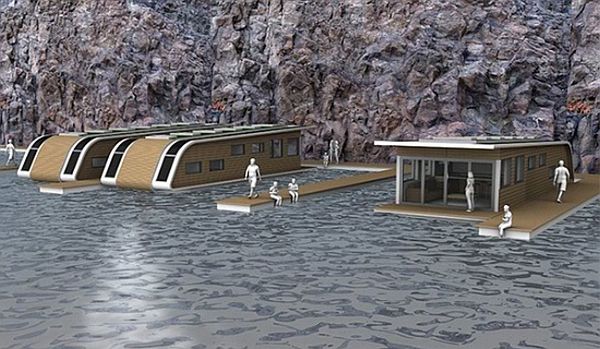
This design is made, keeping in mind the most morbid outcomes of global warming: disappearance of the glaciers and submergence of cities. For such a situation, Kingsley Architects have designed a modern architecture inspired from the popular camper van. Named SolarHome, the 75 square meter homes may not be as spacious as the normal ones, but will keep people afloat for 6-12 months using solar power. However, the mechanism to keep these houses afloat is not yet brought into open, but will be released soon.
3. Self-sufficent floating house powered by the sun and sea
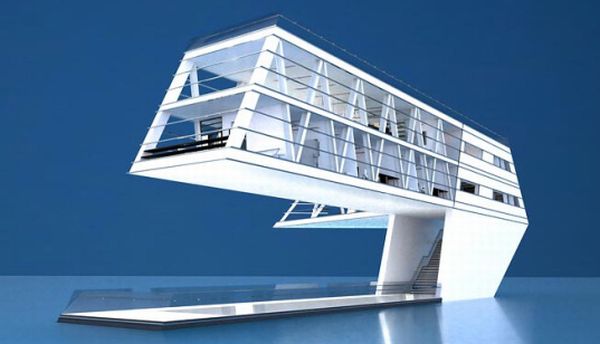
Designed by Formodesign, a Polish company, House on the Water is the floating house that can keep one captivated merely by its looks. Inspired by the luxury yachts, the architecture is white and pristine, with a feeling of a yacht attached to it. It has a deck on the lower side, which floats with the help of the rails installed in the core structure and can be brought up and down anytime. A stairway from the deck leads to the level where the main house is being built. The house is built based on the interiors of a yacht, giving a convenient, luxurious feel to the place. This design is made for rentals to those who want to spend some time offshore, without having to face the bumpy ride of the yacht. Solar energy is tapped with the help of solar panels on the top. Other features include water desalination, natural ventilation, tidal energy systems and water recycling. This house is controlled by an automated mechanism, which, in turn, is controlled by a computer.
The advantages
- Beautiful to look out
- Spacious
- Ecofriendly
- Does not hamper the look of the lakes or seas where they are built
- Effective to live on while at sea
- Can put three-fourth of the planet to human-use
The impact
The floating houses have already started to make their presence felt in Europe. People from the Netherlands have already started to live in the floating houses and many countries will follow the suit. These designs have also raised a ray of hope for survival among the scientists and people, when oceans turn to claim the lands.
Floating houses may not be a vogue for now, but soon enough, because of their mechanisms, looks and effectiveness, they are expected to gain popularity in the near future.


